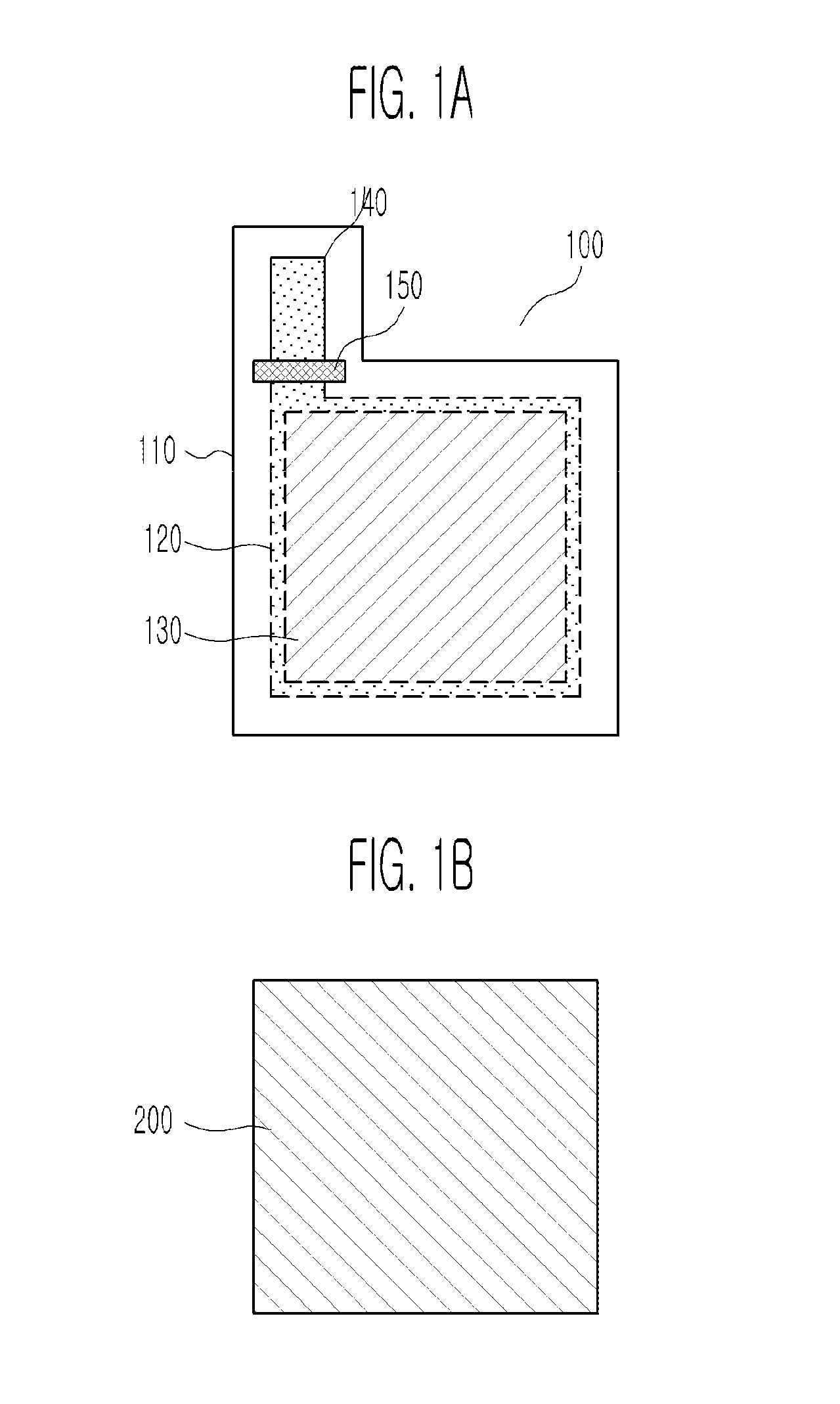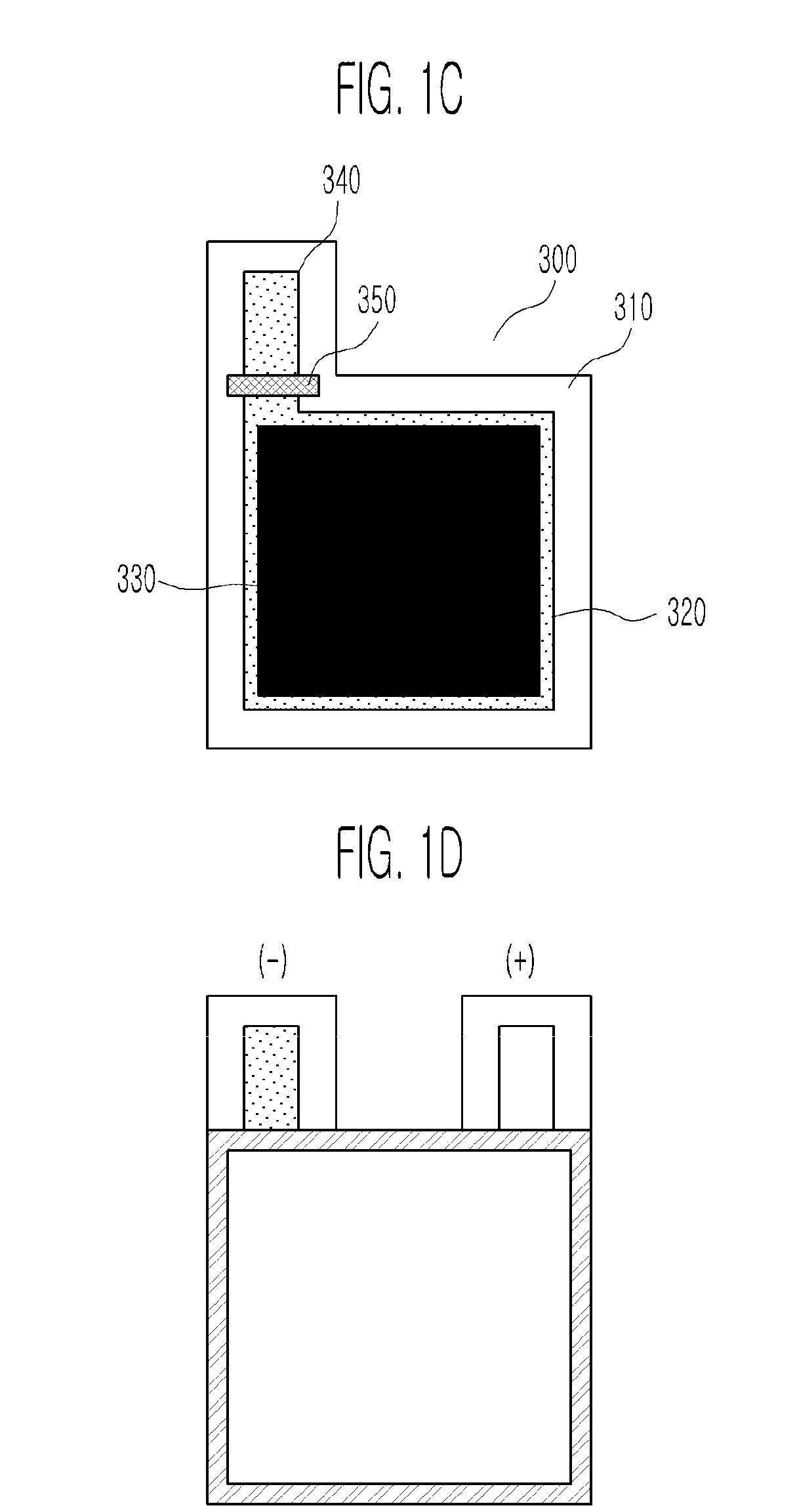Vacuum-sealing-type flexible-film primary battery and method of manufacturing the same
a flexible film, vacuum sealing technology, applied in the direction of primary cell details, cell components, electrochemical generators, etc., can solve the problems of long life, leakage or dryness of the electrolyte contained in the cell, and the inability to completely cut off the transmittance of moisture in the gas or air, and achieve high corrosion resistance to an electrolyte
- Summary
- Abstract
- Description
- Claims
- Application Information
AI Technical Summary
Benefits of technology
Problems solved by technology
Method used
Image
Examples
embodiment 1
of 1.5V Film-Type Manganese (Mn) Primary Battery
[0075]An inner layer was formed of cast polypropylene (c-PP) to a thickness of about 35 mm, an outer layer was formed of nylon to a thickness of about 15 mm, and 30 mm-thick aluminum (Al) foil was inserted between the inner and outer layers. The inner layer, the Al foil, and the outer layer were laminated to form a 75 mm-thick Al pouch. An inner surface of the Al pouch was hydrophilic-treated using a corona discharger in an atmospheric environment until a surface energy reached about 50 dyne / cm or higher. The hydrophilic-treated inner surface of the Al pouch lost its peculiar gloss and became rough. It could be confirmed that when drops of water fell on the surface-treated inner surface of the Al pouch, they did not stand but spread out to facilitate formation of a coating layer.
[0076]Jelly-like highly viscous carbon paste, which was manufactured by dissolving 5% by weight PVDF in N-methyl pyrrolidone (NMP) and adding 95% by weight gra...
embodiment 2
of 3V Film-Type Lithium Primary Battery
[0081]Positive and negative electrode collectors were formed in the same manner as in Embodiment 1, and the positive electrode collector was coated with the same positive electrode active material as in Embodiment 1, thereby forming a positive electrode plate. However, to form a negative electrode plate, 50 μm-thick Li foil was cut to an area of 4.3 cm×4.3 cm, placed on the negative electrode collector, and bonded to the negative electrode collector under pressure.
[0082]Also, a polymer electrolyte layer was formed in the same manner as in Embodiment 1 except that a vinylidene fluoride-HFP copolymer was dissolved in an NMP co-solvent and 25% by weight hydrophobic silica based on the total weight of a polymer matrix was added, and the resulting solution was coated on both 16 mm-thick PE porous layers to a thickness of about 5 mm or more to form a triple composite layer. In this case, an electrolyte was injected and activated in the same manner as...
PUM
| Property | Measurement | Unit |
|---|---|---|
| Length | aaaaa | aaaaa |
| Length | aaaaa | aaaaa |
| Adhesion strength | aaaaa | aaaaa |
Abstract
Description
Claims
Application Information
 Login to View More
Login to View More - R&D
- Intellectual Property
- Life Sciences
- Materials
- Tech Scout
- Unparalleled Data Quality
- Higher Quality Content
- 60% Fewer Hallucinations
Browse by: Latest US Patents, China's latest patents, Technical Efficacy Thesaurus, Application Domain, Technology Topic, Popular Technical Reports.
© 2025 PatSnap. All rights reserved.Legal|Privacy policy|Modern Slavery Act Transparency Statement|Sitemap|About US| Contact US: help@patsnap.com



